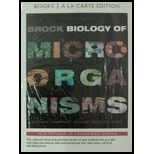
Microscope is a fundamental tool used to study the size and shape of the microorganisms. It magnifies the cell size and other smaller objects. In order to visualize microorganisms, the microscopes are the right choice to view their size and shape of the cells. A typical microscope consists of an eyepiece, objective lens, and light illuminator to visualize the cells or small objects with good magnification and resolution abilities.
Explanation of Solution
Magnification: It is a ratio between the image distances to the object distance. It describes the increase in apparent size of objects compared with its actual size. The below given formula is used to identify the magnification of the image.
Resolution: It is the ability of microscopes to distinguish two objects as separate and distinct.
Both magnification and resolution are independent with each other and it could be increased without each other.
Want to see more full solutions like this?
Chapter 2 Solutions
Brock Biology of Microorganisms, Books a la Carte Plus Mastering Microbiology with eText -- Access Card Package (14th Edition)
 Principles Of Radiographic Imaging: An Art And A ...Health & NutritionISBN:9781337711067Author:Richard R. Carlton, Arlene M. Adler, Vesna BalacPublisher:Cengage Learning
Principles Of Radiographic Imaging: An Art And A ...Health & NutritionISBN:9781337711067Author:Richard R. Carlton, Arlene M. Adler, Vesna BalacPublisher:Cengage Learning


